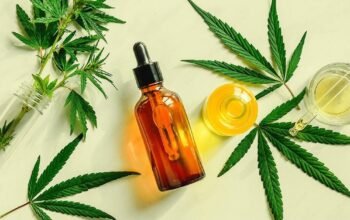Legal highs, also known as novel psychoactive substances (NPS), refer to synthetic or naturally occurring substances that mimic the effects of illegal drugs while remaining within the boundaries of current legal frameworks. These substances are often designed to replicate the effects of controlled substances such as cannabis, ecstasy, or hallucinogens. Understanding legal highs is crucial due to their potential health risks and legal implications.
Understanding Legal Highs
Definition of Legal Highs
Legal highs encompass a broad range of substances that are not controlled under traditional drug laws but can still produce psychoactive effects. These substances may include synthetic cannabinoids, stimulants, hallucinogens, and other chemical compounds. They are marketed as alternatives to illegal drugs, often labeled as “legal,” “herbal,” or “natural,” which can be misleading regarding their safety.
Legal highs are often sold in various forms, including pills, powders, and herbal mixtures, and are typically marketed as “research chemicals” or “not for human consumption” to circumvent legal restrictions. The accessibility of legal highs through online markets and specialty shops contributes to their widespread availability despite varying legal statuses across different jurisdictions.
Types of Legal Highs
Legal highs encompass a diverse array of substances, each with its own effects and risks. Synthetic cannabinoids, for example, mimic the effects of THC in cannabis but can be significantly more potent and unpredictable. Stimulants like bath salts or synthetic cathinones can cause intense euphoria and heightened alertness but also pose severe risks to cardiovascular health and mental wellbeing.
Hallucinogenic substances such as NBOMe compounds or dissociatives like ketamine can induce altered perceptions and sensory experiences akin to classic hallucinogens but with potential for severe adverse effects. Other categories of legal highs include sedatives, empathogens, and even pharmaceutical drugs obtained without a prescription.
Legal highs pose significant challenges due to their unpredictable nature and potential for harm. The lack of regulation and oversight means that consumers often lack crucial information about dosage, purity, and potential interactions with other substances or medications.
Legal Status and Regulations
The legal status of legal highs varies widely across different countries and regions, posing challenges for law enforcement and regulatory agencies. While some substances are explicitly banned under national drug laws, others may exist in legal grey areas or face temporary bans pending further research.
Current Legal Landscape Globally
The global approach to legal highs regulation varies significantly. In some countries, such as the United States and many European nations, specific substances are banned as they emerge, only to be replaced by new variants. This reactive approach aims to curb their availability and minimize harm to users but often lags behind the rapid pace of new substance development.
Specific Regulations in Different Countries
In the United Kingdom, for instance, the Psychoactive Substances Act 2016 aimed to ban all psychoactive substances not already covered by existing drug laws. This blanket prohibition was intended to simplify enforcement efforts and reduce the availability of legal highs on the market. However, critics argue that such measures drive production underground, making substances more dangerous due to lack of oversight.
Effects on Health
The effects of legal highs on health can vary widely depending on the substance, dosage, and individual factors such as age, health status, and concurrent drug use. Understanding these effects is critical to minimizing harm and promoting informed decision-making among users.
Short-term Effects
Short-term effects of legal highs can range from mild euphoria and increased sociability to intense hallucinations, paranoia, and agitation. Synthetic cannabinoids, for example, have been associated with severe anxiety, psychosis, and even seizures in some users due to their potent agonistic effects on cannabinoid receptors.
Stimulants like bath salts or synthetic cathinones can induce heightened energy levels, increased alertness, and a sense of invincibility. However, they can also lead to rapid heart rate, elevated blood pressure, dehydration, and hyperthermia, posing risks of cardiovascular collapse or stroke, especially when combined with physical exertion or other stimulants.
Long-term Risks and Health Implications
The long-term consequences of regular legal highs use are poorly understood due to the novelty and variability of these substances. Chronic use of synthetic cannabinoids, for instance, has been linked to addiction, withdrawal symptoms, and cognitive impairment similar to that seen with traditional cannabis use.
Stimulant use, particularly of highly potent substances like methamphetamine analogs, can lead to neurotoxicity, psychosis, and significant changes in brain structure and function over time. The lack of quality control in production and distribution further complicates efforts to assess long-term health risks accurately.
Potential Interactions with Medications
Legal highs pose additional risks when combined with prescription medications or other illicit substances. The pharmacological interactions between legal highs and pharmaceutical drugs can exacerbate adverse effects and complicate medical treatment for users.
Understanding these potential interactions is crucial for healthcare providers and consumers alike to ensure safe and effective treatment outcomes. Pharmacokinetic interactions, where one substance affects the absorption, distribution, metabolism, or excretion of another, can lead to unpredictable changes in drug potency or toxicity levels.
Safety Considerations
The safety considerations surrounding Legal highs emphasize harm reduction strategies and responsible use practices to mitigate risks associated with their consumption. Educating users about potential dangers and providing access to support services are essential components of public health responses to the legal highs phenomenon.
Risk Factors to Consider Before Consuming Legal Highs
Before consuming legal highs, individuals should assess personal risk factors, including age, underlying health conditions, and history of substance use. Factors such as mental health status and susceptibility to addictive behaviors can significantly influence the likelihood of experiencing adverse effects from legal highs.
Harm Reduction Strategies
Harm reduction strategies aim to minimize the negative consequences of legal highs use without necessarily advocating for abstinence. Education campaigns, peer support networks, and access to drug testing services can empower users to make informed decisions about substance use and reduce associated risks.
Popular Legal Highs and Trends
The popularity of legal highs fluctuates over time, influenced by factors such as media coverage, social trends, and changes in legislation. Monitoring these trends provides insights into emerging substances and patterns of use among different demographic groups.
Recent Trends in Legal Highs Consumption
Recent years have seen a resurgence in legal highs consumption, driven by online availability and the continuous development of new psychoactive substances. Synthetic cannabinoids and cathinones remain prevalent among recreational users seeking alternative experiences to traditional drugs.
Popularity Among Different Demographics
Legal highs appeal to a diverse range of demographics, including young adults experimenting with novel experiences, individuals seeking alternatives to illegal substances, and marginalized communities with limited access to conventional healthcare services. Understanding these demographic patterns can inform targeted prevention and intervention strategies.
Educational and Awareness Efforts
Educational initiatives and awareness campaigns play a crucial role in mitigating the harms associated with legal highs use. Providing accurate information and promoting responsible behaviors are essential steps toward reducing the prevalence of legal highs-related health issues.
Importance of Education and Awareness Campaigns
Education and awareness campaigns aim to debunk myths surrounding legal highs, educate the public about potential risks, and promote harm reduction strategies. Targeted messaging can empower individuals to make informed choices regarding substance use and seek help when needed.
Resources for Information and Support
Access to reliable information and support services is essential for individuals affected by legal highs use, as well as their families and communities. Hotlines, online forums, and local outreach programs can provide guidance, counseling, and referrals to treatment services for those experiencing substance-related issues.
Conclusion:
Understanding legal highs involves recognizing their diverse forms, effects on health, and complex legal status. While legal highs may offer perceived benefits as alternatives to illicit drugs, they also pose significant risks to individual health and public safety. Addressing these challenges requires a multifaceted approach that integrates legislative measures, public health interventions, and community-based initiatives to minimize harm and promote informed decision-making.




